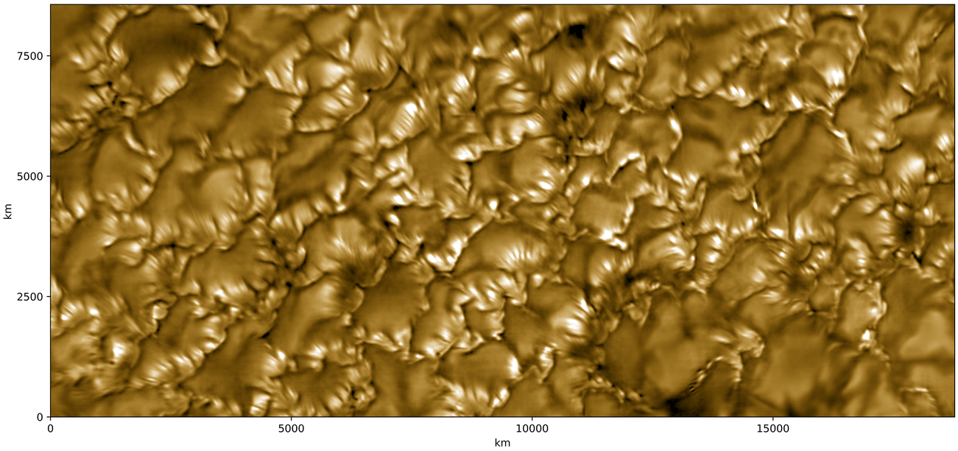Scientists using the world’s biggest solar telescope in Hawaii have captured the sharpest-ever view of the sun’s surface. In doing so, they’ve identified super-fine “stripes” and “magnetic curtains” on the sun for the first time, which could help in understanding how the sun behaves — and how its energetic events can threaten Earth.
Spectacular Images
It comes in the wake of the same telescope’s spectacular image of a planet-sized cluster of sunspots covering 241 million square miles of the sun’s surface, which was published in April.
The Daniel K. Inouye Solar Telescope is the world’s largest solar telescope, situated atop the 10,000-foot-tall Haleakalā volcano in Hawaii. A 13-foot/four-meter solar ground-based telescope, it’s designed to help solar physicists investigate the physics of the sun and how it drives space weather.
‘Stripes’ Rippling On The Sun
The ultra-fine magnetic “stripes” observed by the DKIST are bright and dark striations that appear to be rippling across the sun. The incredible detail reveals curtain-like magnetic fields and a new layer of complexity in the sun’s magnetic structure.
“We investigate the fine-scale structure of the solar surface for the first time with an unprecedented spatial resolution of just about 20 kilometers or the length of Manhattan Island,” said Dr. David Kuridze, the lead author of the study, published today in The Astrophysical Journal Letters, and a scientist at the National Solar Observatory. “These striations are the fingerprints of fine-scale magnetic field variations.”
Fundamental Magnetism
What causes the “stripes” are magnetic fluctuations, which only DKIST’s huge 4-meter mirror can detect. “Magnetism is a fundamental phenomenon in the universe, and similar magnetically induced stripes have also been observed in more distant astrophysical objects, such as molecular clouds,” said Dr. Han Uitenbroek, co-author of the study and an NSO scientist. A deeper understanding of how magnetism works on the sun is essential if astronomers are to understand the origin of solar flares, eruptions and coronal mass ejections — powerful events that charge up the solar wind and can cause geomagnetic storms around Earth.
Approximately 93 million miles from Earth, the sun is a middle-aged star, having existed for approximately five billion years. It burns around five million tons of hydrogen fuel every second.
Pushing The Frontiers
“This is just one of many firsts for the Inouye, demonstrating how it continues to push the frontier of solar research,” said Dr. David Boboltz, NSO Associate Director for the DKIST. “It also underscores Inouye’s vital role in understanding the small-scale physics that drive space weather events that impact our increasingly technological society here on Earth.”
DKIST’s stunning “first light” images showed a close-up view of the sun’s surface, revealing turbulent “boiling” plasma across the entire star. The cell-like structures are violent motions that transport heat from the inside of the sun to its surface.
Wishing you clear skies and wide eyes.

